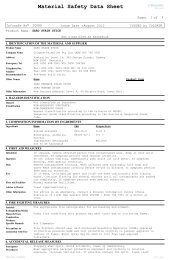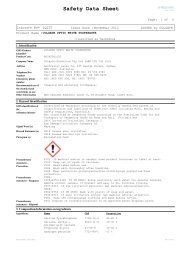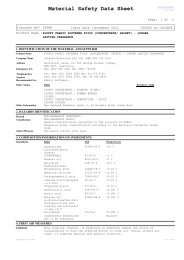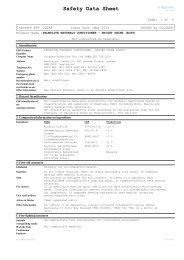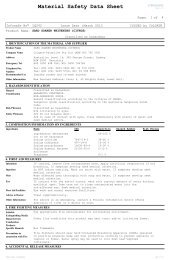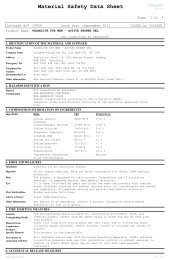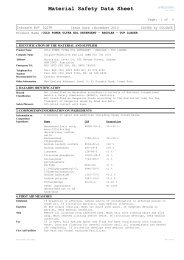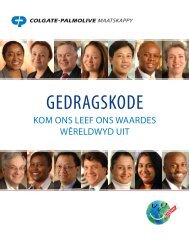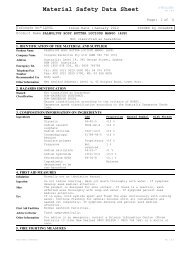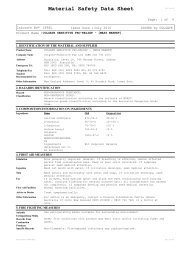Create successful ePaper yourself
Turn your PDF publications into a flip-book with our unique Google optimized e-Paper software.
Activity<br />
Escape from Sorcerer Plakula’s Dungeon<br />
Team Problem Solving<br />
Learning Areas: PDHPE (Problem<br />
solving, decision making, cooperative<br />
teamwork)<br />
Activity at a <strong>Glance</strong>:<br />
In the story, the characters worked together to escape<br />
Sorcerer Plakula’s sticky traps. In this activity, the<br />
students will work together and use good problem<br />
solving strategies to identify and discuss dilemmas<br />
and solutions.<br />
Learning Outcomes:<br />
Oral Health: The student will identify proper oral health methods<br />
and apply their oral health knowledge to problem solving.<br />
PDHPE: The student will use good problem solving strategies to<br />
solve dilemmas related to oral health and apply decision making<br />
skills to their own lives.<br />
Preparation:<br />
Materials: Chart paper/chalkboard and crayons/markers<br />
Set-up: Draw a PMI Organiser. Divide the chart paper/chalkboard into<br />
three categories. Label the categories: Plus, Minus, and Interesting.<br />
PMI Organiser<br />
Plus Minus Interesting<br />
Procedures:<br />
Introduction/Prior Knowledge:<br />
• Ask students, “Can you recall a time you’ve had to make<br />
a hard decision about a problem you had? Is there always<br />
one right solution to a problem?” Discuss how they’ve<br />
handled decisions in the past.<br />
• Ask students, “What obstacles did the children in the story<br />
face? How did they handle these obstacles?” Make a list of<br />
obstacles and how they handled each. Point out which<br />
solutions worked effectively and which did not.<br />
Example<br />
Obstacle:<br />
• The children had to escape from the plaque dungeon bars.<br />
Solution:<br />
• They tried to squeeze through the bars. This did not work.<br />
• They wanted to use the tooth soldiers, but the tooth<br />
soldiers were too weak.<br />
• Ask students, “How did they try to strengthen the<br />
tooth soldiers?” They used fluoride toothpaste.<br />
• Ask students, “But what about not reaching the<br />
fluoride toothpaste?” It was in the cart and the cart<br />
was too far away. “How could they reach the cart?”<br />
They took the floss from Paul’s pants and made a<br />
lasso to pull the cart closer.<br />
• Ask students, “How did they reach the tooth soldiers<br />
to strengthen them?” They made an extra long<br />
toothbrush.<br />
• Ask students, “How did they get through the plaque<br />
dungeon bars?” They brushed the tooth soldiers with<br />
fluoride toothpaste and the tooth soldiers were<br />
stronger and saved the children.<br />
• Divide students into groups to re-enact the escape<br />
using props (created by the students) to simulate oral<br />
health tools.<br />
Application:<br />
• As a class, discuss other variables to the problem and how they can be<br />
handled. Ask students, “What if the extra long toothbrush broke? What<br />
other solutions might they try?” Make a class list of possible solutions.<br />
• Introduce the PMI problem solving strategy. For each solution, ask<br />
students what is the plus, minus, and interesting parts of each solution and<br />
record their responses on the PMI Organiser. Students can discuss these<br />
orally or write them down in chart form.<br />
• Ask students, “What do you think would be the best solution to the broken<br />
toothbrush dilemma?” They should judge the plus, minus, and interesting<br />
points they came up with for possible solutions and then decide.<br />
Closing:<br />
• In their journal, ask students to select<br />
their choice for the best solution and the<br />
plus, minus, and interesting points they<br />
came up with. Students should justify<br />
their choice. Ask volunteers to share their<br />
responses.<br />
Extension:<br />
• Think of other variables or dilemmas the<br />
students could face. Think of alternative<br />
solutions.<br />
10



